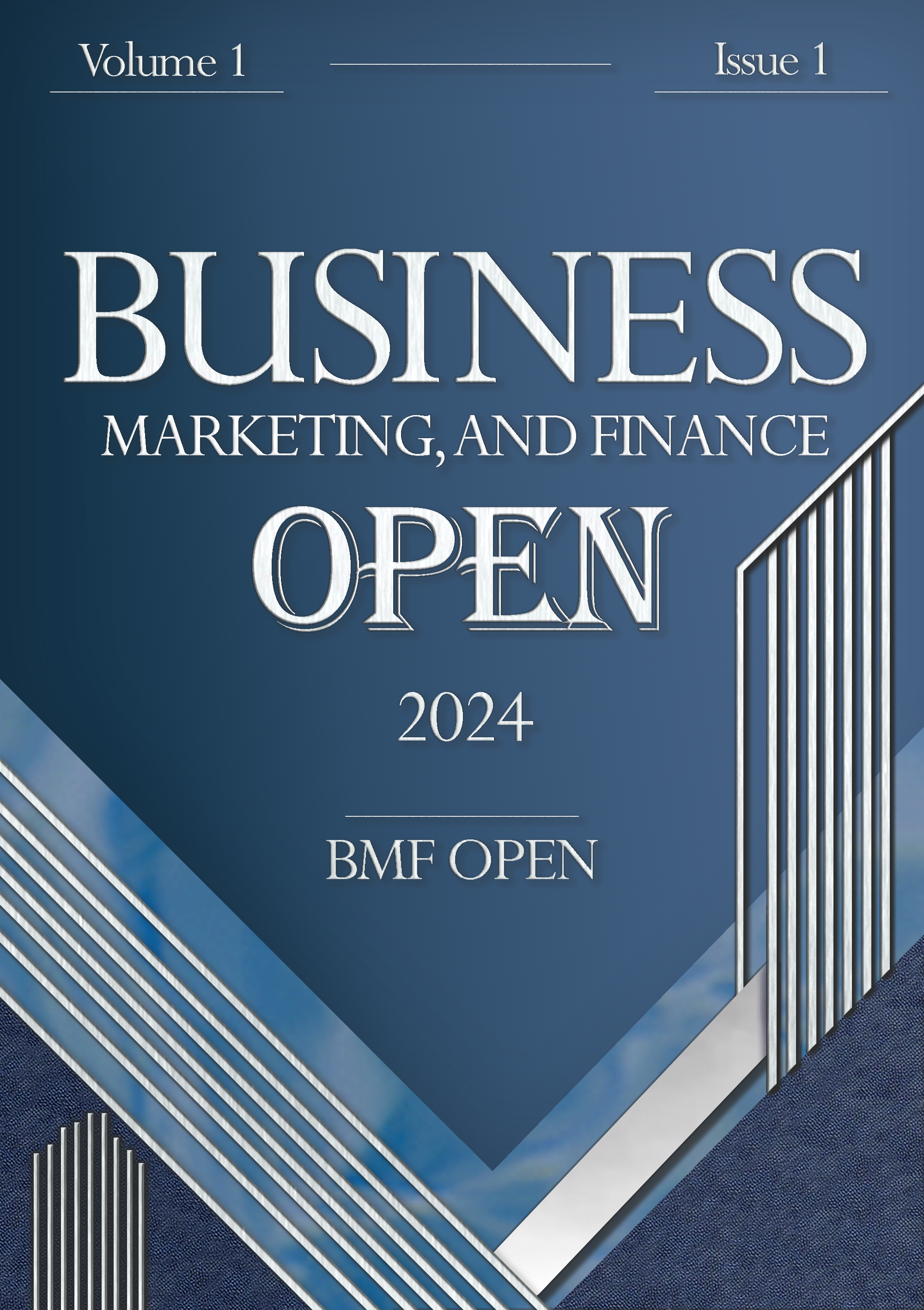The Threshold Effect of Oil Rent on Non-Oil Economic Growth in Light of Financial Development: A Case Study of Iraq
Keywords:
Oil rent, non-oil economic growth, financial development, threshold regression model, IraqAbstract
The purpose of this study is to examine the effect of oil rent on Iraq’s non-oil economic growth and to investigate the moderating role of financial development as a threshold variable in this relationship. To measure financial development in Iraq’s economy, three key indicators—(1) the ratio of credit to the private sector, (2) the ratio of liquidity to GDP, and (3) the ratio of bank credit to GDP—were selected. These indicators were integrated into a composite index using the Principal Component Analysis (PCA) method to address collinearity and the limitations of individual measures. The index was incorporated into an extended Solow neoclassical growth model that includes financial development and oil resource variables. Time series data from 1998 to 2023 were analyzed using stationarity and cointegration tests as well as the threshold regression model. A set of diagnostic tests was also conducted to ensure the validity of the results. All estimations were performed using EViews and Stata software. The findings revealed that Iraq’s economic time series variables during the period 1998–2023 exhibited mixed stationarity characteristics—some variables, such as LnYIRAQ and LnFDIRAQ, were stationary at level, while others became stationary after first differencing. Across the four estimated threshold regression models with different financial development indicators, neither capital nor labor variables showed significant effects on non-oil growth, reflecting Iraq’s strong structural dependence on oil and institutional weaknesses. Regarding oil rent, at low levels of financial development, its effect was generally positive but statistically insignificant (except in the third model, where it was positive and significant). In contrast, at high levels of financial development, the effect of oil rent became negative and, in some cases, significant (notably in the third and fourth models). Diagnostic tests—including residual analysis, Portmanteau, and CUSUM—confirmed the stability and goodness of fit of the models, except in the fourth model, where heteroskedasticity was detected. This issue was corrected using robust standard errors, which further reinforced the negative impact of oil rent. Overall, the results indicate that even when financial indicators surpass quantitative thresholds, without improvements in institutional quality and resource allocation efficiency, adverse phenomena such as the “resource curse” and “Dutch disease” cannot be avoided.
References
M. Samambet, "Is natural resource wealth a boon or a bane? The impact of oil rents and foreign direct investment on economic growth in Kazakhstan," Journal of Infrastructure, Policy and Development (JIPD), vol. 8, no. 13, 2024, doi: 10.24294/jipd.v8i13.5486.
Z. Sun and Z. Cai, "Does Financial Development Hamper or Improve the Resource Curse? Analysis Based on the Panel Threshold Effect Model," Math. Probl Eng., pp. 1-10, 2020, doi: 10.1155/2020/4013647.
F. Hasanov, R. Aliyev, D. Taskin, and E. Suleymanov, "Oil Rents and Non-Oil Economic Growth in CIS Oil Exporters. The Role of Financial Development," Resource Policy, vol. 82, p. 103523, 2023, doi: 10.1016/j.resourpol.2023.103523.
H. A. Almahadin, T. Kaddumi, and Q. Al-Kilani, "Banking soundness-financial stability nexus: Empirical evidence from Jordan," Banks and Bank Systems, vol. 15, no. 3, pp. 218-227, 2020, doi: 10.21511/bbs.15(3).2020.19.
F. A. Adebayo, A. T. Adebusuyi, and M. A. Ishola, "An econometric analysis of impact of public expenditure on industrial growth in Nigeria," International Journal of Economics and Finance, vol. 6, no. 10, pp. 112-117, 2014, doi: 10.5539/ijef.v6n10p112.
J. Zhou, Z. Ma, T. Wei, and C. Li, "Threshold effect of economic growth on energy intensity-Evidence from 21 developed countries," Energies, vol. 14, no. 14, p. 4199, 2021, doi: 10.3390/en14144199.
R. M. Solow, "A contribution to the theory of economic growth," The Quarterly Journal of Economics, vol. 70, no. 1, pp. 65-94, 1956, doi: 10.2307/1884513.
T. B. Dan and N. N. Thach, "Which Solow model - homogeneous technology-, heterogeneous technology-, or human capital-augmented - best explains OECD growth? Fresh evidence from Bayesian Monte Carlo simulations," Montenegrin Journal of Economics, vol. 20, no. 2, pp. 251-265, 2024, doi: 10.14254/1800-5845/2024.20-2.20.
P. Romer, "Endogenous Technological Change," Journal of Political Economy, vol. 95, pp. 71-102, 1990, doi: 10.1086/261725.
X. Ding, Y. Huang, W. Gao, and W. Min, "A comparative study of the impacts of human capital and physical capital on building sustainable economies at different stages of economic development," Energies, vol. 14, no. 19, p. 6259, 2021, doi: 10.3390/en14196259.
Y. Fikri, S. Mantouzi, M. Rhalma, and S. Youssef, "Economic growth: A literature review," Revue Internationale du Chercheur, vol. 5, no. 1, pp. 802-813, 2024.
B. E. Hansen, "Inference when a nuisance parameter is not identified under the null hypothesis," Econometrica, vol. 64, no. 2, pp. 413-430, 1996, doi: 10.2307/2171789.
Q. Wang and X. Wang, "Threshold effects of COVID-19-confirmed cases on change in pollutant changes: Evidence from the Chinese top ten cities," Environmental Science and Pollution Research, vol. 28, no. 39, pp. 45756-45764, 2021, doi: 10.1007/s11356-021-13980-w.
B. G. Habeeb and A. A. Hasan, "The impact of non-oil public revenues on non-oil GDP in Iraq for the period (2004-2021)," Russian Law Journal, vol. 11, no. 12s, 2023, doi: 10.52783/rlj.v11i12s.2029.
J. A. Slow, "The impact of foreign trade on the numerous economic sectors in Iraq for the period (2003-2021)," Journal of University of Duhok, vol. 26, no. 2, pp. 1018-1035, 2023, doi: 10.26682/hjuod.2023.26.2.59.
G. Bekele, "Effects of monetary policy on inflation in Ethiopia: Using ARDL co-integration approach," Journal of Investment and Management, vol. 12, no. 1, pp. 1-11, 2023, doi: 10.11648/j.jim.20231201.11.
W. Munyeka, "The relationship between economic growth and inflation in the South African economy," Mediterranean Journal of Social Sciences, vol. 5, no. 15, pp. 119-129, 2014, doi: 10.5901/mjss.2014.v5n15p119.
A. Isiaka, A. Isiaka, and A. Isiaka, "Forecasting with ARMA models: A case study of the exchange rate between the US Dollar and a unit of the British Pound," International Journal of Research in Business and Social Science, vol. 10, no. 1, pp. 205-234, 2021, doi: 10.20525/ijrbs.v10i1.1005.
N. A. K. Rifai and M. A. Zhahirulhaq, "Forecasting inflation in Indonesia using the autoregressive integrated moving average method," Parameter: Journal of Statistics, vol. 4, no. 1, pp. 37-45, 2024, doi: 10.22487/27765660.2024.v4.i1.17130.
M. I. Tabash, O. Ezekiel, A. Ahmed, A. Oladiran, Y. Elsantil, and A. I. Lawal, "Examining the linkages among financial inclusion, economic growth, poverty, and inequality reduction in Africa," Scientific African, vol. 23, p. e02096, 2024, doi: 10.1016/j.sciaf.2024.e02096.
W. A. Ngcobo, S. Zhou, and S. S. Pillay, "The Effect of Financial Market Capitalisation on Economic Growth and Unemployment in South Africa," Economies, vol. 13, no. 3, p. 57, 2025, doi: 10.3390/economies13030057.
C. Meniago, B. T. Mazorodze, and G. Mah, "Linking financial development and economic growth: do we have new evidence of the role of institutions in CFA countries?," Cogent Economics & Finance, vol. 13, no. 1, p. 2460067, 2025, doi: 10.1080/23322039.2025.2460067.
F. M. Alemu, "An Empirical Analysis of the Nexus between Inflation, Exchange Rate, Unemployment and Economic Growth in Ethiopia: A Granger Casualty Approach," 2025, doi: 10.1177/09750878241234254.
M. Ogundipe, "Culture of Small Businesses: Foundations for a Study on a Catalyst of Economic Growth," International Journal of Management & Entrepreneurship Research, vol. 7, no. 1, pp. 74-84, 2025, doi: 10.51594/ijmer.v7i1.1799.
I. T. Jolliffe and J. Cadima, "Principal component analysis: a review and recent developments," Philosophical Transactions of the Royal Society A: Mathematical, Physical and Engineering Sciences, vol. 374, no. 2065, p. 20150202, 2016, doi: 10.1098/rsta.2015.0202.
Y. K. Hwang and Á. Sánchez Díez, "Renewable energy transition and green growth nexus in Latin America," Renewable and Sustainable Energy Reviews, vol. 198, p. 114431, 2024, doi: 10.1016/j.rser.2024.114431.
L. Wang, "Biomechanical Perspectives on Sustainable Animal Husbandry: Dynamic Mechanisms of Economic Growth and Ecological Balance," Molecular & Cellular Biomechanics, vol. 22, no. 3, p. 1260, 2025, doi: 10.62617/mcb1260.
S. Sotoudehnia Karani and B. Shafi'zad Abkenar, "An Investigation of the Effect of Uncertainty on Economic Growth and Monetary Policies in Iran," Economic Growth and Development Research, 2025, doi: 10.30473/egdr.2025.73885.6971.
Downloads
Published
Submitted
Revised
Accepted
Issue
Section
License
Copyright (c) 2025 Obaida Amer Khudhair Al-Bazi (Author); Seyed Kamal Sadeghi; Reza Ranjpour, Elham Nobahar (Author)

This work is licensed under a Creative Commons Attribution-NonCommercial 4.0 International License.






